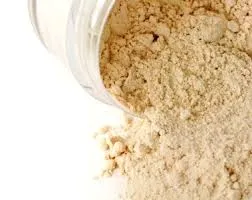Ammonium Thiocyanate Properties, Applications, and Safety
Ammonium thiocyanate (NH4SCN) is an important compound in the field of chemistry, notable for its versatile applications and unique properties. This colorless, crystalline salt is formed from the reaction of ammonia with thiocyanic acid or by neutralizing thiocyanate salts with ammonium salts. Ammonium thiocyanate is primarily known for its role in various industrial processes, as well as in scientific research.
Chemical Properties
Ammonium thiocyanate has a molar mass of 76.12 g/mol and is highly soluble in water, which makes it a useful reagent in numerous chemical reactions. The compound exhibits interesting thermal properties, as it undergoes a phase change at around 143°C, transitioning from solid to liquid. In solution, it dissociates into ammonium (NH4⁺) and thiocyanate (SCN⁻) ions, which can participate in a variety of chemical reactions. This dissociation is important for its uses in different applications, including its role as a reagent in analytical chemistry.
The thiocyanate ion (SCN⁻) itself is a potent ligand, often forming complex ions with metals, which is an essential feature in coordination chemistry. Its ability to coordinate with metal ions makes ammonium thiocyanate a key component in various analytical techniques, particularly in the qualitative analysis of metal ions.
Applications
One of the primary applications of ammonium thiocyanate is in the field of analytical chemistry. It is often used in the detection of certain metal ions due to the formation of colored complexes. For example, its reaction with iron ions produces a distinctive red complex, which can be quantified spectrophotometrically. This property makes ammonium thiocyanate invaluable in laboratories for trace metal analysis.
In addition to its analytical uses, ammonium thiocyanate is also applied in the manufacture of fertilizers, which benefit from the thiocyanate ion's ability to enhance soil quality. The compound serves as a nitrogen source, contributing to the growth and yield of crops.
thiocyanate ammonium

Furthermore, ammonium thiocyanate is employed in the production of various chemicals, including pharmaceuticals and pesticides. It acts as an intermediate in the synthesis of certain organic compounds, demonstrating its versatility in industrial applications.
Apart from chemical industry applications, ammonium thiocyanate is also used as a reagent in biological and biochemical research. For instance, it is used in certain extraction protocols and as a stabilizing agent during enzyme purification processes.
Safety and Handling
While ammonium thiocyanate has many beneficial applications, it is important to note that it can be hazardous if not handled properly. It may release toxic fumes when heated or in contact with strong acids. Ingestion or inhalation of large quantities can lead to thiocyanate poisoning, which can affect the thyroid gland as thiocyanate is known to interfere with iodine absorption.
When working with ammonium thiocyanate, it is essential to follow standard laboratory safety protocols. This includes wearing protective clothing, gloves, and goggles, as well as working in a well-ventilated area to avoid exposure to harmful fumes. It's advisable to store the compound in a cool, dry place, away from incompatible substances like strong acids.
Conclusion
Ammonium thiocyanate is a compound with significant relevance in both industrial and research settings due to its unique properties and versatile applications. Its role in analytical chemistry, agriculture, and the production of various chemicals underscores its importance. However, safety precautions must be taken seriously when working with this compound to mitigate any potential health risks. As research progresses, the understanding and applications of ammonium thiocyanate are likely to expand, further emphasizing its importance in both science and industry.

